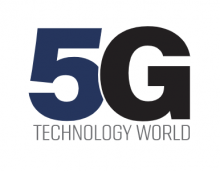
To deliver on the promise of 5G, which sometimes seems like everything to everyone, network operators will need to augment their existing network architectures, addressing some flexibility brought into existence with the new 5G technologies and designs. Overall, 5G brings numerous changes to the mobile network, its architecture, and the equipment used to construct it. 5G is so much more than a wireless technology. Indeed, it’s producing significant changes on the wired network, particularly in the fronthaul, the portion of the network closest to the radio.
Most of us are familiar with backhaul, that network connection pulling traffic from RAN (radio access network) into the mobile core network. The rapid growth of data rich mobile services (video chat, augmented maps / directions, rich web applications, streaming video, etc.) and the raw number of connected devices, drove increasing requirements on these connections, including throughput and latency requirements. Most of these connections are deployed over dedicated fiber optical links or microwave links. Operators have also deployed additional links, upgraded connections, and where necessary, installed additional equipment.
5G requires operators to review strategies and plan for evolution in the mobile transport networks. First, the 5G new radio (NR) will use increasingly higher frequencies (moving from sub-1GHz to above 6 GHz and beyond) and wider spectrum bandwidths (channels). These changes will drive a need to deploy more radio units (RU). More RUs are needed because as the frequency of the radio carrier is increased, its range will decrease (i.e. higher radio frequencies can only travel a shorter distance). This increase in RU deployment has commonly been referred to as the “5G densification”, and is part of the 5G strategy to deliver on the promise of increased throughput to the user equipment (UE), a.k.a. your mobile device. That’s because high radio frequencies and wider spectrum/channel usage can deliver higher throughput.
Second—though not specific to 5G—there is a move to the disaggregation of network equipment. The disaggregation of a networking device is a reengineering process, where a monolithic device is separated into constituent components. These components can then be deployed into different network locations to gain efficiencies in deployment, operation, and management of those devices.
